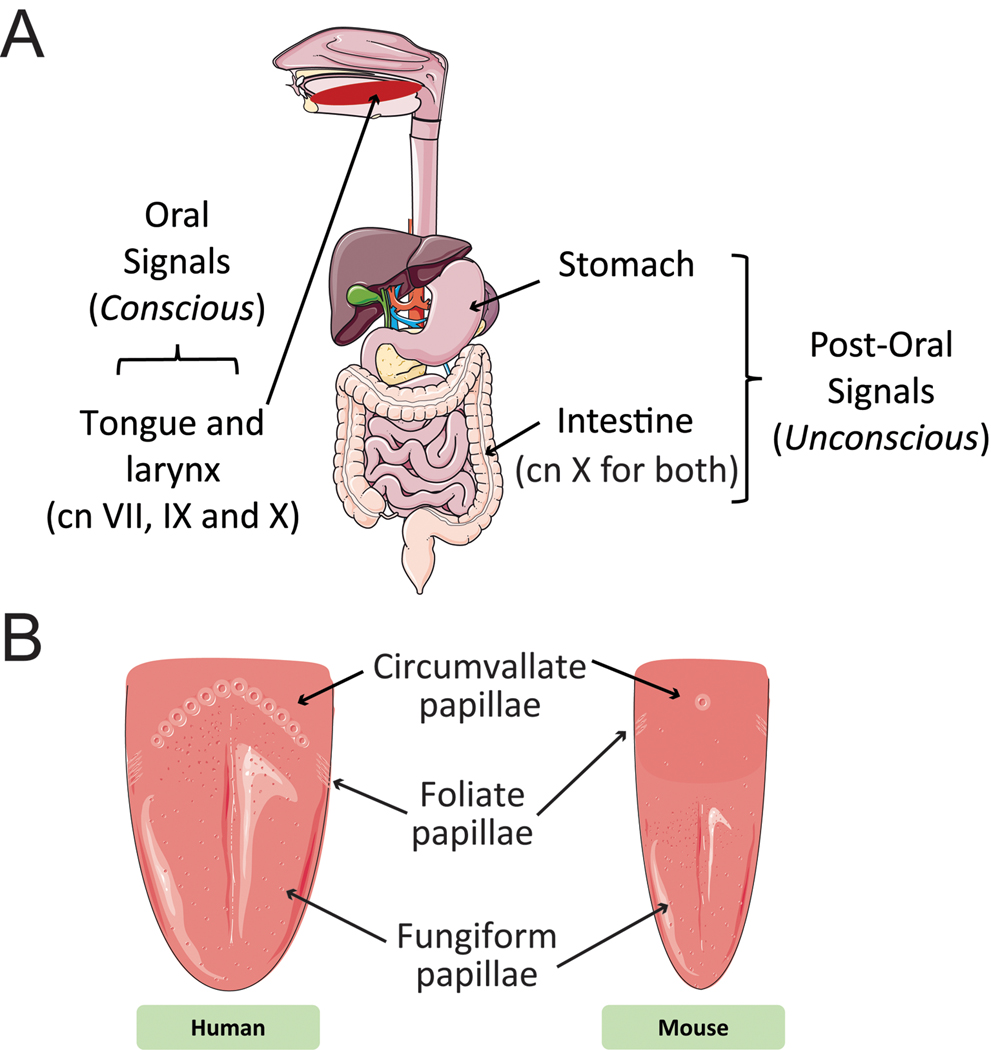Figure 1.
Sensory influences on behavioral taste preferences based on alimentary canal anatomy. (A) Sensory signals generated by ingestion and digestion of tastants are classified into oral (gustation and somesthesis) and post-oral signals. Gustatory signals are conscious signals generated by activation of chemically sensitive receptors in the tongue and larynx. These signals are carried to the brain by cranial nerves (cn) VII, IX, and X. Post-oral signals are unconscious signals generated by activation of chemically sensitive receptors in the stomach and intestine and are carried to the brain by cn X. (B) Tastants in the mouth activate receptors in taste buds located in three specialized structures within the tongue: circumvallate papillae in the posterior lingual epithelium, foliate papillae on the posterior lateral sides of the tongue, and fungiform papillae in the anterior two thirds of the tongue. Illustrations modified from Servier Medical Art (http://www.servier.com/Powerpoint-image-bank).

